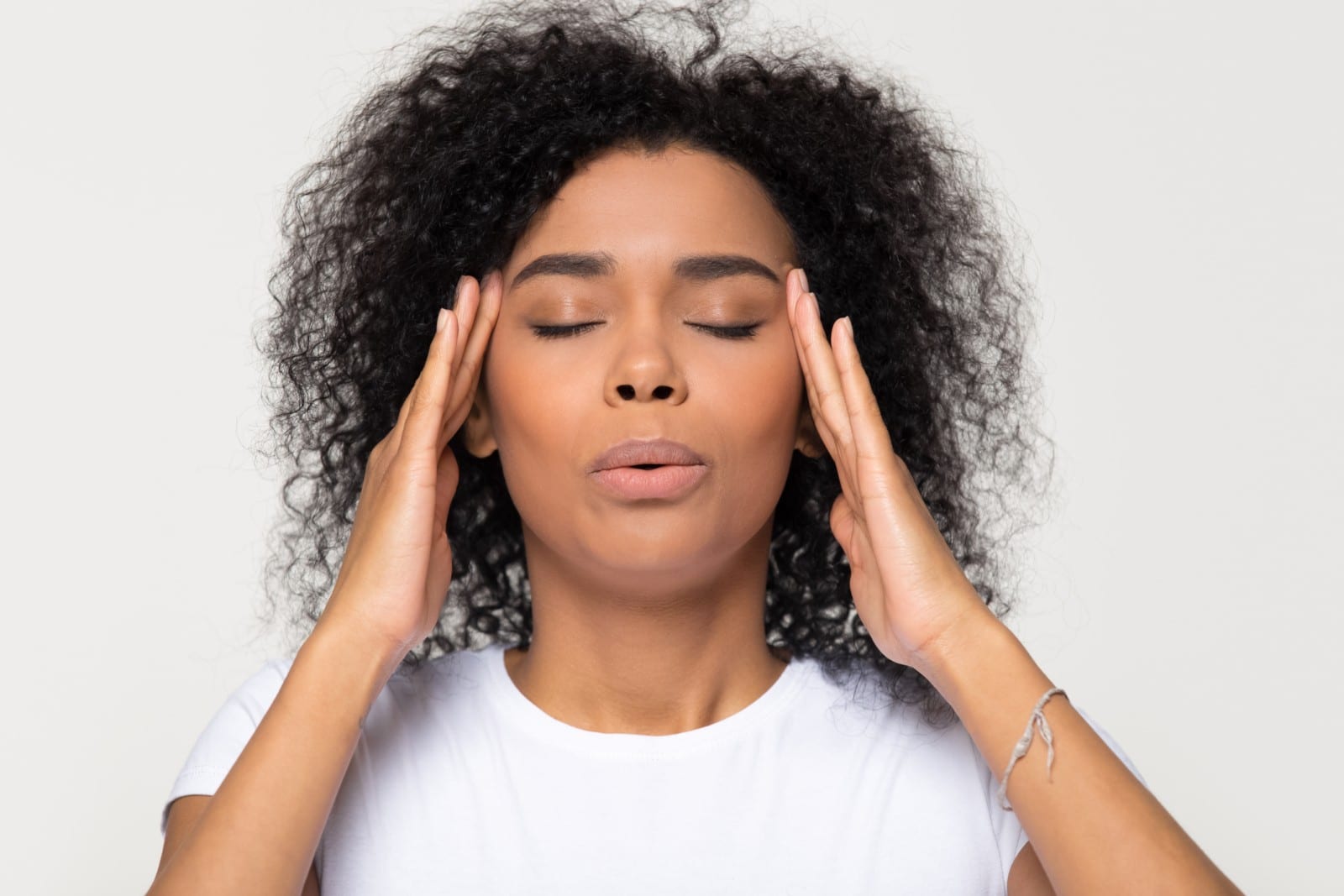If there’s one type of pain we’ve probably all felt at one point or another, it’s the pain of a headache. In fact, the World Health Organization (WHO) says that headaches rank in the top ten overall and the top five for women of the most disabling disorders globally. Tension-type headaches are the most prevalent, afflicting 78% of individuals who have headaches.
Those numbers tell us what we probably already know from personal experience: Tension-type headaches are a part of life — an inconvenient, uncomfortable, sometimes even debilitating part of life.
But do we have to accept their prevalence, pop a pain reliever, and try to move on with our day?
We don’t, says Jeff Foucrier, PT, DPT, OCS, CMTPT. In the past, management of tension-type headaches has relied on pharmaceuticals, but Jeff says there is a growing body of evidence that non-drug therapies, like treating muscle tissue in physical therapy, can be effective in reducing tension headache frequency, intensity and duration.
What Does A Tension Headache Feel Like?
Jeff says that every person is very different, but generally speaking, “oftentimes patients will say that they’ve had a band-like tension that has been building over the past two to three days.”
Who Typically Gets Tension Headaches?
These headaches are more common in women, particularly younger women. Jeff says that, according to the research, tension-type headaches may be anywhere from twice as common to six times as common in women, and that they decrease as women age.
How Are Tension Headaches Different From Other Headaches?
“They can be confused with other types of headaches like migraine or cervicogenic headaches (headaches that originate from the neck). Tension-type headaches distinguish themselves from other types of headaches because they can affect both sides of the head, and they’re generally not very severe in nature. They’re consistent, lasting for a couple of hours up to seven days or more,” Jeff explains, noting that they don’t come with the nausea and light or sound sensitivity that often characterize migraines.
What Brings On A Tension Headache?
Think your tension headache is brought on by muscle tension? It seems a natural conclusion, but Jeff says, “That’s actually not accurate. The interesting thing is the stress itself causes the headache, and the muscle tension is a secondary effect of the stress. So the stress itself is what actually stimulates the headache. And then sometimes the muscle tension accompanies the headache.”
There are a variety of factors that can cause stress and trigger a headache: Chemical changes, stressors or stimulus throughout the day to the body or mind, even genetic factors. Tension headaches are thought to be neurological, but there’s actually some research that shows they could be neuromuscular — relating to both nerves and muscles: 89% of individuals with tension-type headaches also report having neck pain.
What’s The Best Way To Manage These Headaches?
Turning to NSAIDs (such as ibuprofen) and acetaminophen is what many people do to manage headaches, but used too often, these can only make the pain spiral. “Unfortunately, the use of these pharmaceuticals on a regular basis makes that person more prone to have more severe headaches as well as more regular headaches, and they can also develop rebound headaches,” Jeff says.
What to do instead? Because some of the cause of tension headaches is neuromuscular in nature, physical therapy can be an important component in managing headaches.
“There is some evidence to show that, yes, muscular dysfunction can perpetuate them or make these headaches more severe.” A physical therapist can be a good partner to your physician in helping you manage the headaches, because PTs are trained to teach you how to “offload” those troubled tissues. “Physical therapy is part of, but not a comprehensive solution,” Jeff says. “We want to have a multifactorial approach, and as physical therapists, we collaborate with other medical professionals. Physical therapy will help modify some of the factors, but there should be a dialogue between the different practitioners.”
How Can Physical Therapy Help?
Physical therapy primarily helps people manage or minimize the stresses that cause headaches in the first place. “There are many ways we can influence the muscle system” to minimize the pain, Jeff says.
A patient-centered approach leads to success. If a patient comes in with a tension-type headache, he’ll have a conversation with them about everything from nutrition to exercise to sleep to stress management. “We would also discuss what we can do to manage some of the symptoms associated with the headache, which can include the tension in the muscle tissue” — including meditation, breathing exercises, physical exercises, and soft-tissue work.
Identifying the root causes due to lifestyle or physiological issues is an important first step. Then, the PT can provide education and training that will teach the individual to move in ways that decrease the adverse effects. “Sometimes even simple education and instructing the person how to move on a simple level, and maybe just focusing on one or two things a day can have a pretty significant impact,” Jeff says.
The goal? Fewer headaches, less intense headaches, and an increased resilience to life’s stressors. “Resilience is a key word when it comes to headaches,” Jeff says. “What we’re trying to do is make sure that the person is as functional and as successful as they can be, and respond to stimulus in such a manner that they’re able to live the life they want to live.”
Learn more about Orthopedic Rehabilitation at Spooner Physical Therapy. Ready to schedule an appointment? Schedule an appointment or complimentary movement screen with a Spooner physical therapist at one of our locations throughout the valley.

